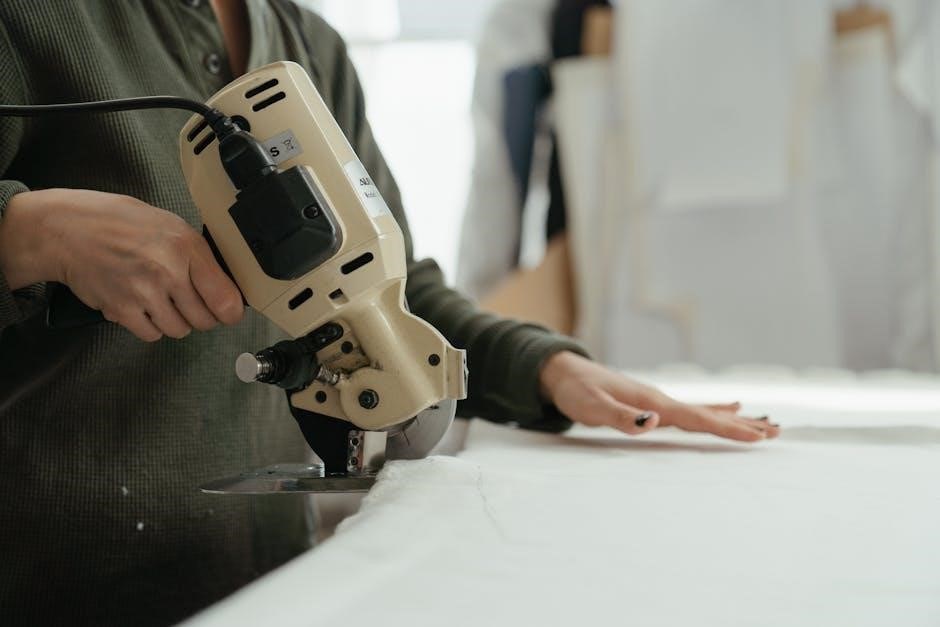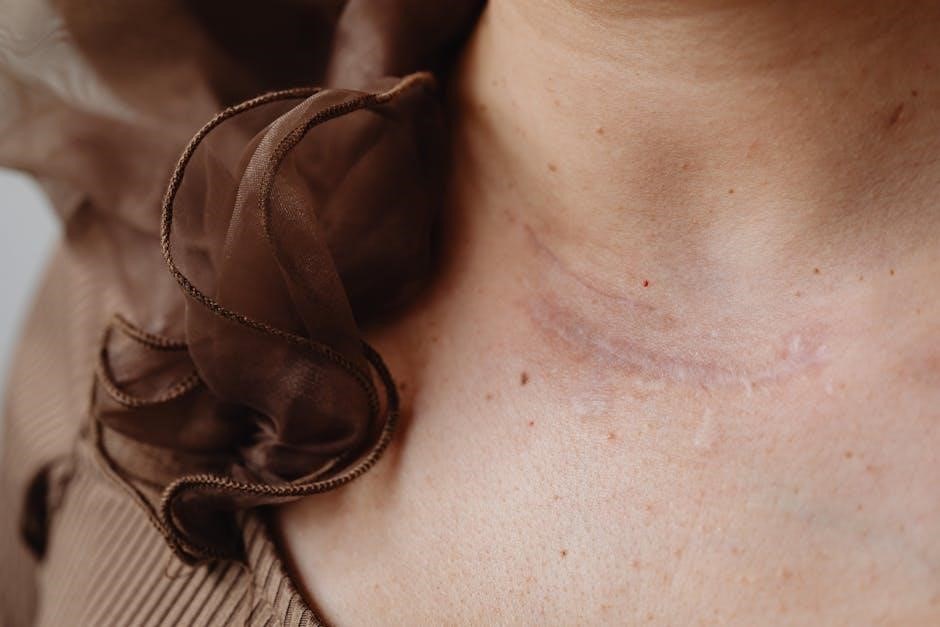Guided Tissue Regeneration (GTR) is a minimally invasive procedure that uses barriers to promote bone and tissue regrowth around teeth. It helps restore oral health and functionality.
What is Guided Tissue Regeneration?
Guided Tissue Regeneration (GTR) is an advanced dental procedure that promotes the regrowth of lost bone and tissue around teeth. It involves placing a barrier, such as a membrane or scaffold, to guide the healing process and prevent unwanted tissue invasion. This technique is often used to treat periodontal defects, stabilize loose teeth, or prepare the jaw for dental implants. GTR is minimally invasive and leverages the body’s natural healing capabilities to restore oral health. By creating a controlled environment, it allows bone and gum tissue to regenerate effectively, improving both aesthetics and functionality. This method is particularly beneficial for patients with severe periodontal disease or significant bone loss, offering a targeted solution to enhance dental stability and overall well-being.
Overview of GTR in Dental Surgery
Guided Tissue Regeneration (GTR) is a surgical technique used in dentistry to repair damaged periodontal tissues and bone. It involves the placement of biocompatible barriers, such as membranes or scaffolds, to guide the healing process. These barriers prevent the growth of unwanted tissue in the defect area, allowing bone and gum tissue to regenerate naturally. GTR is commonly used to treat deep periodontal pockets, bone loss, and to prepare the jaw for dental implants. The procedure is minimally invasive and often performed under local anesthesia. It is highly effective in restoring lost tissue and improving the stability of teeth. GTR is typically recommended for patients with advanced periodontal disease or significant bone defects, offering a targeted approach to regenerate lost structures and enhance oral health outcomes. The goal is to create a stable environment for long-term dental functionality and aesthetics.

Factors Affecting the Cost of GTR
The cost of Guided Tissue Regeneration varies based on the severity of bone and tissue loss, number of sites treated, materials used, geographic location, and dental insurance coverage.
Severity of Bone and Tissue Loss
The severity of bone and tissue loss significantly impacts the cost of GTR. Extensive damage requiring complex regeneration procedures increases expenses. Advanced cases may need specialized materials like membranes or grafts, raising costs; For instance, procedures involving guided bone regeneration can range from $600 to $1,200 per graft, depending on the extent of bone loss. More severe cases often require additional procedures, such as collagen membrane placement or bone grafting, further influencing the total cost. Dental insurance coverage may also vary based on the severity, affecting out-of-pocket expenses. Patients with moderate to severe bone loss should expect higher costs compared to those with minimal damage. severity is a critical factor in determining the overall expense of GTR, as it directly correlates with the complexity and resources required for the procedure.
Number of Sites Treated
The number of sites treated is a key factor influencing the cost of GTR. Treating multiple areas in the mouth increases the overall expense, as each site requires individualized attention and materials. For example, a single-site treatment might cost between $500 to $2,500, while addressing multiple sites can significantly raise the total cost. Clinics often charge per quadrant or per tooth, with prices varying based on the complexity of each site. Patients requiring full-mouth reconstruction or treatment across multiple quadrants can expect costs to range from $30,000 to $150,000, depending on the extent of the procedure. The more sites treated, the higher the cumulative expense, making it essential to discuss treatment plans and costs with your dentist beforehand. This ensures clarity on the financial commitment required for your specific case.
Type of Materials Used (Membranes, Grafts, etc.)
The type of materials used in GTR significantly impacts the cost. Synthetic bone grafts, for instance, typically range from $300 to $800 per implant area. Collagen membranes, commonly used to guide tissue growth, can add $200 to $500 to the procedure. Resorbable scaffolds and advanced biomaterials may increase costs further due to their complexity. Additionally, the use of autografts (patient’s own bone) is more expensive, often costing $1,000 to $2,000 per graft, but may offer better regenerative outcomes. The selection of materials depends on the patient’s specific needs and the dentist’s recommendations, influencing both the effectiveness and the overall expense of the treatment. Higher-quality or specialized materials can elevate the procedure’s success rate but also increase the financial burden on the patient.
Geographic Location of the Clinic
The geographic location of the clinic plays a significant role in determining the cost of GTR. Clinics in urban areas or major cities often charge higher fees due to increased operational costs and higher living expenses. For example, GTR procedures in North America can range from $500 to $2,500 per site, while in Europe, costs may vary similarly based on the country and region. Additionally, clinics in areas with a higher concentration of specialist dentists or advanced facilities may charge premium rates. Conversely, clinics in smaller towns or less densely populated regions may offer more affordable options. The variability in regional pricing highlights the importance of consulting with local providers to understand the specific costs in your area. This ensures accurate budgeting and informed decision-making for your GTR treatment.
Dental Insurance Coverage
Dental insurance coverage significantly influences the cost of Guided Tissue Regeneration (GTR). While some insurance plans may cover part of the procedure, others may not, depending on the policy and the specific treatment needs; In many cases, insurance providers classify GTR as a surgical procedure, and coverage varies widely. For example, if the procedure is deemed medically necessary for stabilizing teeth or preparing for dental implants, insurance may cover a portion of the cost. However, patients should verify their coverage beforehand, as some plans may exclude certain aspects of GTR or require pre-approval. Out-of-pocket expenses can still be substantial, even with insurance, making it essential to review the treatment plan and insurance details carefully before proceeding. This ensures a clear understanding of financial responsibilities and avoids unexpected costs.

Cost Range for Guided Tissue Regeneration
Guided Tissue Regeneration costs typically range from $500 to $2,500 per site, depending on the procedure’s complexity and materials used. Additional fees may apply for consultations and follow-ups.
Minimum and Maximum Cost Per Site
The cost of Guided Tissue Regeneration (GTR) per site typically ranges from $500 to $2,500. The minimum cost per site is generally around $500 for simpler procedures, while more complex cases can reach up to $2,500. Factors such as the severity of bone loss, the type of materials used (e.g., collagen membranes or synthetic grafts), and the need for additional procedures can influence the final cost. Dental insurance coverage varies, and some plans may cover a portion of the procedure, reducing out-of-pocket expenses. Geographic location and the expertise of the dental specialist can also impact the price range. It’s essential to consult with a dental professional to get an accurate estimate based on individual needs.
Cost for Multiple Sites or Full-Mouth Reconstruction
Treating multiple sites or opting for full-mouth reconstruction significantly increases the cost of Guided Tissue Regeneration (GTR). For multiple sites, the cost can range from $1,500 to $10,000 or more, depending on the number of sites and the complexity of each case. Full-mouth reconstruction, which may involve extensive bone and tissue regeneration, can cost between $10,000 and $30,000 or higher. These estimates include additional procedures, such as dental implants or sinus lifts, which are often necessary for comprehensive reconstruction. Insurance coverage for such extensive treatments varies widely, and out-of-pocket expenses can be substantial. The final cost is influenced by factors like the severity of bone loss, the materials used, and the dentist’s expertise. Consulting with a dental specialist is crucial to obtain an accurate estimate tailored to individual needs.
Additional Costs (Consultations, Follow-Ups, etc.)
Additional costs for Guided Tissue Regeneration (GTR) include consultations, follow-up appointments, and diagnostic imaging. Initial consultations can range from $50 to $200, depending on the dentist’s expertise and location. Follow-up visits, necessary to monitor healing and remove membranes, may cost $50 to $150 each. X-rays or 3D scans, essential for pre- and post-procedure assessments, can add $100 to $500. Sedation or anesthesia, if required, increases costs by $200 to $1,000. These expenses are typically not included in the base GTR procedure cost. Insurance coverage for these additional fees varies, so patients should verify their plans. Overall, these extras can add $500 to $2,000 or more to the total cost, highlighting the importance of discussing all fees with the dentist during the initial consultation.

Regional Variations in GTR Costs
Regional variations in GTR costs are influenced by factors like location, clinic rates, and local policies, affecting total expenses for patients.
Cost in North America
In North America, the cost of guided tissue regeneration (GTR) varies depending on the clinic and location. On average, GTR procedures can range from $600 to $1,200 per graft, with some practices charging up to $2,500 per site for complex cases. Factors such as the severity of bone loss, the number of teeth treated, and the materials used (e.g., collagen membranes or synthetic grafts) influence the final cost. Dental insurance coverage also plays a role, as some plans may partially cover GTR procedures, while others may not. Urban areas like New York or Los Angeles tend to have higher prices due to living costs and clinic overhead. Patients should consult their dentist to get a personalized estimate based on their specific needs and location.
Cost in Europe
In Europe, the cost of guided tissue regeneration (GTR) varies by country and clinic. On average, GTR procedures range from €500 to €1,500 per site, depending on the complexity of the case. In the UK, for example, costs can range from £800 to £2,500 per site, while in Germany, prices are slightly lower, ranging from €600 to €1,200. Factors such as the severity of bone loss, the type of materials used (e.g., collagen membranes or synthetic grafts), and the clinic’s location influence the final cost. Major cities like London or Berlin tend to have higher prices due to clinic overhead; Insurance coverage also varies across European countries, with some plans partially covering GTR procedures. Patients are advised to consult their dentist or specialist for a detailed estimate tailored to their specific needs and location.

Cost in Other Regions
In regions outside North America and Europe, the cost of guided tissue regeneration (GTR) varies significantly. In Australia, GTR procedures typically range from AUD 1,000 to AUD 3,000 per site, depending on the clinic and materials used. In Asia, countries like India or South Africa may offer more affordable options, with costs ranging from $300 to $1,000 per site due to lower labor and material costs. The Middle East, with its advanced dental clinics, sees prices between $1,200 and $3,500 per site. Factors such as the clinic’s reputation, geographic location, and the severity of the case influence these costs. Additionally, the type of materials used, such as collagen membranes or synthetic grafts, can impact the final price. Patients are encouraged to consult local dental specialists for a precise estimate tailored to their specific needs and location.

Insurance and Payment Options
Dental insurance coverage for GTR varies, with some plans offering partial reimbursement. Out-of-pocket payment plans and financing options are often available to make treatment more accessible and affordable.

Dental Insurance Coverage for GTR
Dental insurance coverage for Guided Tissue Regeneration (GTR) varies widely depending on the provider and policy. Some plans may cover a portion of the procedure if it is deemed medically necessary, such as for stabilizing teeth or preparing the jaw for dental implants. However, coverage is often limited, and cosmetic or elective procedures may not be included. It is essential to review your insurance policy and consult with your provider to determine the extent of coverage. In many cases, patients may still incur out-of-pocket expenses, even with insurance. Factors such as the severity of the condition, the type of materials used, and the geographic location can influence whether the procedure is covered. Always verify the details with your insurance company and dentist to understand your financial responsibilities.
Out-of-Pocket Payment Plans
Out-of-pocket payment plans for Guided Tissue Regeneration (GTR) are often necessary due to limited insurance coverage. Patients may incur costs ranging from $500 to $2,500 per site, depending on the procedure’s complexity. Additional fees for consultations, follow-ups, and materials like membranes or grafts can increase the total expense. Many clinics offer flexible payment options to help manage these costs, such as installment plans or financing through third-party providers. Some dental offices also provide discounts for multiple-site treatments or referrals. It’s essential to discuss payment options with your dentist or clinic to create a plan that fits your budget. Understanding the full breakdown of costs and exploring available financing solutions can help make GTR more affordable. Always ask about hidden fees and ensure the payment plan aligns with your financial situation before proceeding with treatment.
Financing Options for GTR Procedures
Financing options for Guided Tissue Regeneration (GTR) procedures are available to help patients manage costs. Many dental clinics offer third-party financing through companies like CareCredit or LendingClub, which provide low-interest or no-interest payment plans. Some clinics also offer in-house financing options, allowing patients to pay in installments over time. Credit cards are another common method, especially those with promotional zero-interest periods. Additionally, some practices partner with financial institutions to provide tailored solutions. Patients are encouraged to discuss financing options with their dentist or clinic administrator to explore affordable payment terms. These options can significantly reduce the financial burden, making GTR procedures more accessible. Always inquire about any associated fees or interest rates to ensure the plan aligns with your budget and financial goals.

How to Estimate Your GTR Costs
Estimating GTR costs begins with an initial consultation to assess your specific needs. Reviewing the treatment plan and asking about hidden fees ensures transparency and helps you budget effectively.

Importance of Initial Consultation
An initial consultation is crucial for understanding your GTR needs and costs. It allows your dentist to evaluate the extent of bone and tissue loss, discuss treatment options, and outline a personalized plan. During this session, you can inquire about the types of materials and techniques to be used, as well as any additional procedures that may be required. This is also an opportunity to review your dental insurance coverage and determine how much of the cost will be covered. By addressing all these factors upfront, you can avoid unexpected expenses and make informed decisions about your treatment. A clear understanding of the costs and procedures ensures a smooth and stress-free experience.
Understanding the Treatment Plan

A clear understanding of the treatment plan is essential for estimating GTR costs accurately. The plan outlines the specific procedures, materials, and number of sites to be treated, ensuring transparency in pricing. It details whether synthetic or natural grafts will be used, the type of membrane, and the complexity of the surgery. Additionally, the plan may include pre- and post-operative care, which can affect overall costs. By reviewing the treatment plan, patients can identify all components contributing to the final cost and avoid unexpected expenses. This step also helps in verifying insurance coverage and understanding out-of-pocket payments. A well-structured treatment plan ensures that patients are fully informed and prepared for their financial investment in GTR. It serves as a roadmap for both the procedure and the associated costs, fostering trust and clarity between the patient and dentist.
Asking About Hidden Fees
When discussing the cost of guided tissue regeneration, it’s crucial to inquire about potential hidden fees. These may include charges for consultations, follow-up appointments, and post-operative care. Additional costs could arise from diagnostic imaging, anesthesia, or specialized materials like collagen membranes. Insurance coverage often excludes certain aspects of GTR, leaving patients with out-of-pocket expenses. Patients should ask for a detailed breakdown of all fees to avoid surprises. Requesting an itemized list ensures transparency, helping you understand where your money is going. Clarifying these costs upfront can prevent financial stress and ensure a smoother treatment process. Open communication with your dentist or clinic is key to understanding the total investment required for GTR.
